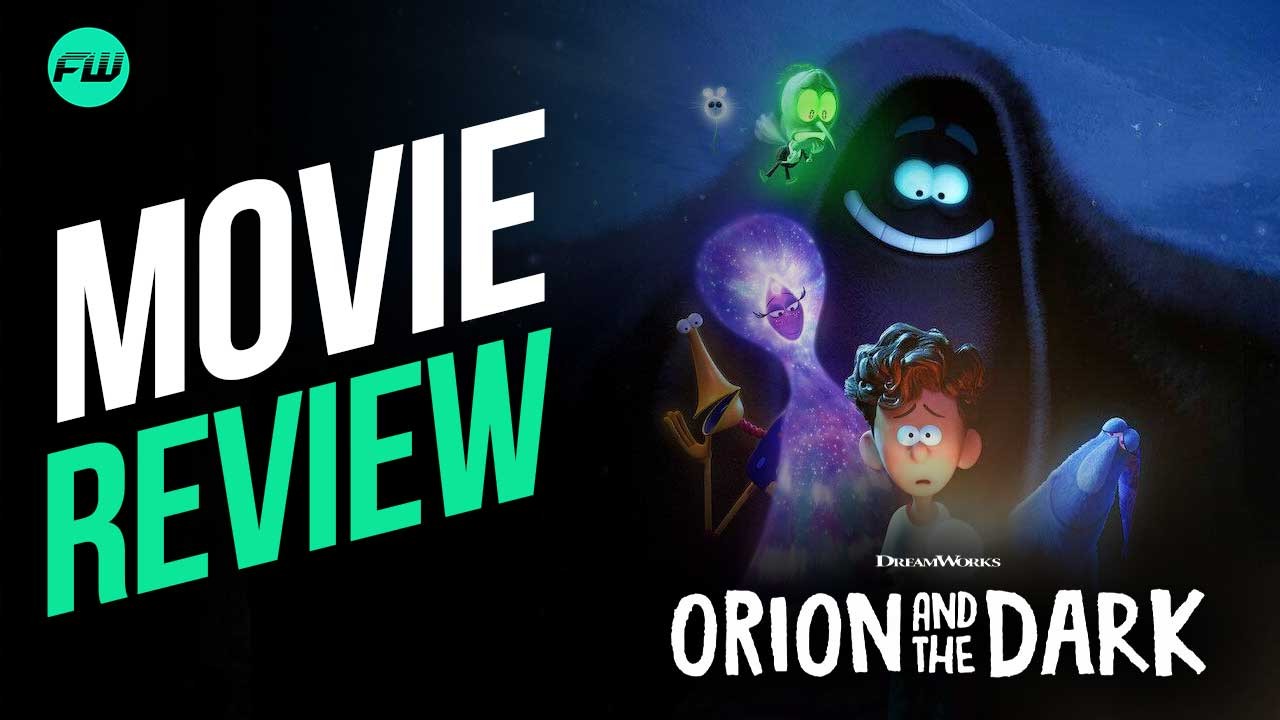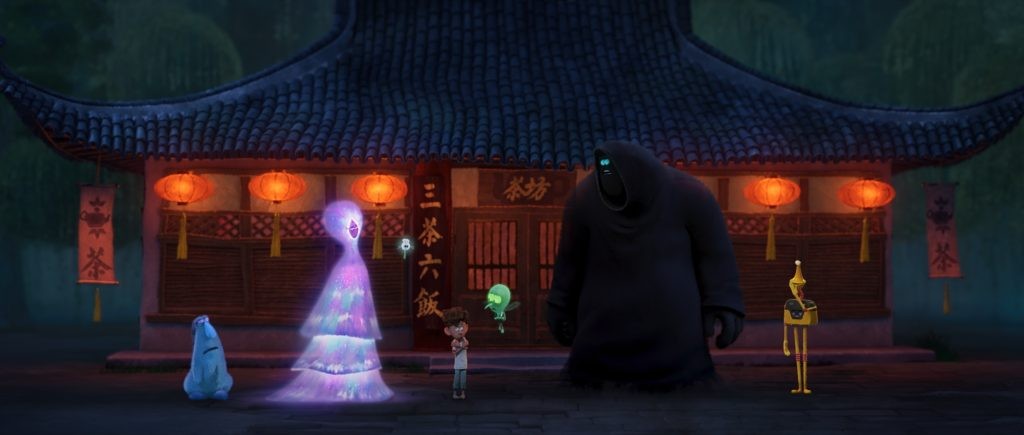I grew up with countless children’s stories, but interestingly enough, Orion and the Dark by Emma Yarlett was never one of the most popular stories in my home country or simply went unnoticed by my parents. Going into director Sean Charmatz’s adaptation (his feature film debut) and Charlie Kaufman’s screenplay – the main reason for my high expectations due to unforgettable movies like Being John Malkovich, Eternal Sunshine of the Spotless Mind, and even I’m Thinking of Ending Things – I had not yet read the original book, so I was completely open-minded for any narrative changes.
That being said, I did read Yarlett’s tale after watching the film, and in retrospect, it was rather predictable that the cinematic adaptation would add more elements to the original story, which was quite short and simple. After all, it’s a children’s book where, besides having as many or more images than text, the drawings stand out more than the letters. Adaptations are just that: transitions of stories from their original medium to another distinct one with inevitable adjustments, whether creating new characters, different plot points, or mere visual details. The important thing is to maintain the original essence and messages, something that Orion and the Dark accomplishes seamlessly.
Orion and the Dark Critique
Also Read: Out of Darkness review: A Stone Aged Horror Filled With Dread
Both the book and the movie tell the story of Orion (Jacob Tremblay), a teenager completely consumed by numerous irrational fears such as bees, dogs, heights, killer clowns, talking to a girl he likes, and, above all, the dark. One night, the physical manifestation of darkness, Dark (Paul Walter Houser), appears in his room and takes Orion on a journey of self-discovery, where he learns to face his fears and, above all, understand and learn to live with them instead of running away or ignoring them.
Orion and the Dark is naturally a story with meaningful messages for its young target audience, but anyone who thinks it exclusively conveys the generic lesson of “we must confront our fears” is mistaken. Kaufman adds complexity and depth to a once-simplified narrative, including an interesting perspective on how fear should be accepted and seen as part of our personality, contrary to the idea that it’s something external, inexplicable, and uncontrollable.
Personally, this particular message fits perfectly with air travel. Regardless of the passenger, the “tiny bit of fear” is always present, even if it’s only in a slightly more nervous subconscious. Still, a person gets on the plane, makes the journey with more or less minor scares, and always ends up reaching their destination. The rest of life is alike: with many or few fears and concerns, we wake up in the morning, go to work or school, deal with greater or lesser daily turbulence, and, in the end, always land where we are supposed to.
Kaufman enriches the narrative thematically with the addition of new characters that complement the dark and characterize the night, such as Sweet Dreams (Angela Bassett), Sleep (Natasia Demetriou), or Insomnia (Nat Faxon) – all adding a layer of humor to the movie. Orion and the Dark holds simple yet beautiful animation, and as strange as it may sound, it’s quite warm and welcoming. There’s something special about the mix of 3D characters and 2D background drawings that makes the film one of those extremely comfortable home viewings to watch on a couch with dozens of blankets.
However, Kaufman’s creativity extends too much to the narrative structure, leading to unnecessary complexity that will likely require adults’ explanations for younger viewers. Orion and the Dark possesses a conclusion that, despite making sense in the context of the film, quickly becomes confusing and raises irrelevant questions totally disconnected from the main theme. Honestly, I don’t know how easy it will be for parents to explain the ending in a simple enough way for children to understand…
Technically, the score from Kevin Lax (The First Purge) and Robert Lydecker (Iron Fist) deserves praise, complementing the contemplative atmosphere of Orion and the Dark, as well as the aforementioned animation quality. No one particularly stands out in the voice cast, as everyone delivers convincing performances. A commendable debut for Charmatz… may he continue with a successful career!
In Conclusion
Orion and the Dark preserves the essence and messages of the original tale about understanding and accepting our fears as something that characterizes us as human beings. Charlie Kaufman expands the story with narrative complexities that, aside from unnecessarily confusing structural details, thematically enrich the overall film. The mix of 2D and 3D animation makes the visual experience captivating and warm, accompanied by an equally lovely score and competent vocal performances. An easy recommendation for families and children around the world.
7/10
Follow us for more entertainment coverage on Facebook, Twitter, Instagram, and YouTube.




